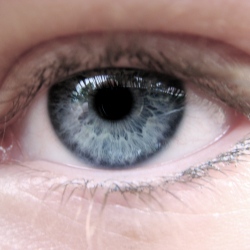
Even though the IQ tests are the most basic ones, the news that an artificial brain can tackle them might give some people pause. Does this signal the rise of the machines? The neuroscientists working on the large-scale model simulation of the brain say this version is still pretty simple compared to the real deal, but it is valuable in helping us see and understand how our brains developed.
The artificial brain, built by neuroscientists and software engineers at the University of Waterloo in Canada, runs on a supercomputer, uses a 784 pixel digital eye for visual input and has a robot arm to draw responses. It even has a name — Spaun (Semantic Pointer Architecture Unified Network.
So far this sounds like your average robot scientists have been playing with. What makes this artificial brain different is that it’s not constructed like a robot, but rather mimics the structure of a real brain. It has 2.5 million simulated neurons that were constructed to pattern the brain’s cranial subsystems. This means the artificial brain has a prefrontal cortex, basal ganglia, and thalamus all wired together to work like the wiring of real thing.
The various sections of Spaun are designed the way scientists felt the real counterparts would work. The visual input from the eye is processed by the thalamus, data is stored in the neurons and the basal ganglia direct the appropriate portion of the brain to complete a task. The team designed the brain to perform its computation in the most physiologically accurate way — even simulating voltage spikes and neurotransmitters.
A basic example of the task or computation required of it is when nscientists flashing various numbers and letters at it. These are read by the Spaun’s eye and then reads into memory. Another letter or symbol provides the instruction for the basic input (or memory) and then the robotic arm moves as directed.
Speaking of tasks, aside from controlling robot arms and passing IQ tests, just what can this artificial brain actually do? Is it going to take my job? Not yet; so far it only performs eight different tasks that range from copy drawing, counting, question answering and fluid reasoning.
